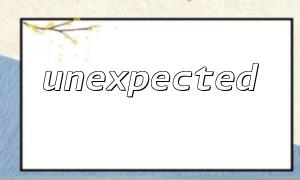In traditional web applications, short connections are commonly used for communication. Every time the client sends a request to the server, the server processes the request and returns a response, then immediately closes the connection. However, in certain application scenarios, such as real-time chat and push notifications, long connections offer better real-time interaction. This article will explain how to implement efficient long connection communication in PHP, with detailed code examples.
To implement long connection communication in PHP, there are two common techniques: polling and WebSocket.
Polling is a simple long connection communication technique. The basic idea is that the client continuously sends requests to the server. Upon receiving a request, the server checks if there is any new data to push to the client. If there is, it immediately sends the data; if not, it keeps the connection open until new data is available. The disadvantage of polling is that it can generate a lot of unnecessary requests, increasing the server's load.
Here is a simple example of polling in PHP:
<?php
// Server-side
$data = "Hello, World!"; // Data to be pushed
while (true) {
$newData = checkNewData(); // Check for new data
if ($newData) {
echo $newData;
flush(); // Send response immediately
break;
}
usleep(1000); // Sleep for 1 millisecond to avoid high CPU usage
}
// Client-side
set_time_limit(0); // Remove time limit
while (true) {
$response = sendRequest(); // Send request
if ($response) {
echo $response;
}
usleep(1000); // Sleep for 1 millisecond
}
?>
WebSocket is a more efficient and powerful long connection communication protocol that supports full-duplex communication. It allows the server and client to send messages to each other without waiting for requests. Compared to polling, WebSocket reduces unnecessary requests and is more suitable for applications requiring high real-time interaction, such as online games, live chat, and stock notifications.
Here is a simple example of WebSocket in PHP:
<?php
// Server-side
$server = new WebSocketServer("localhost", 8000); // Create a WebSocket server object
while (true) {
$client = $server->accept(); // Accept client connection
while (true) {
$message = $client->receive(); // Receive client message
if ($message) {
// Process the client message
// $data = processMessage($message);
// Push the processed data to the client
// $client->send($data);
}
}
$client->close(); // Close client connection
}
// Client-side
$socket = new WebSocketClient("ws://localhost:8000"); // Create WebSocket client object
while (true) {
$message = $socket->receive(); // Receive server message
if ($message) {
// Process the server message
// $data = processMessage($message);
// Display the processed data to the user
// echo $data;
}
// Send a message to the server
// $socket->send($message);
}
?>
This article introduced two common methods for implementing long connection communication in PHP: polling and WebSocket. Each method has its own advantages and disadvantages, so choosing the right one depends on the specific needs of your application. We hope that the provided examples help you understand and apply long connection communication techniques in your PHP applications to achieve real-time data transfer.









